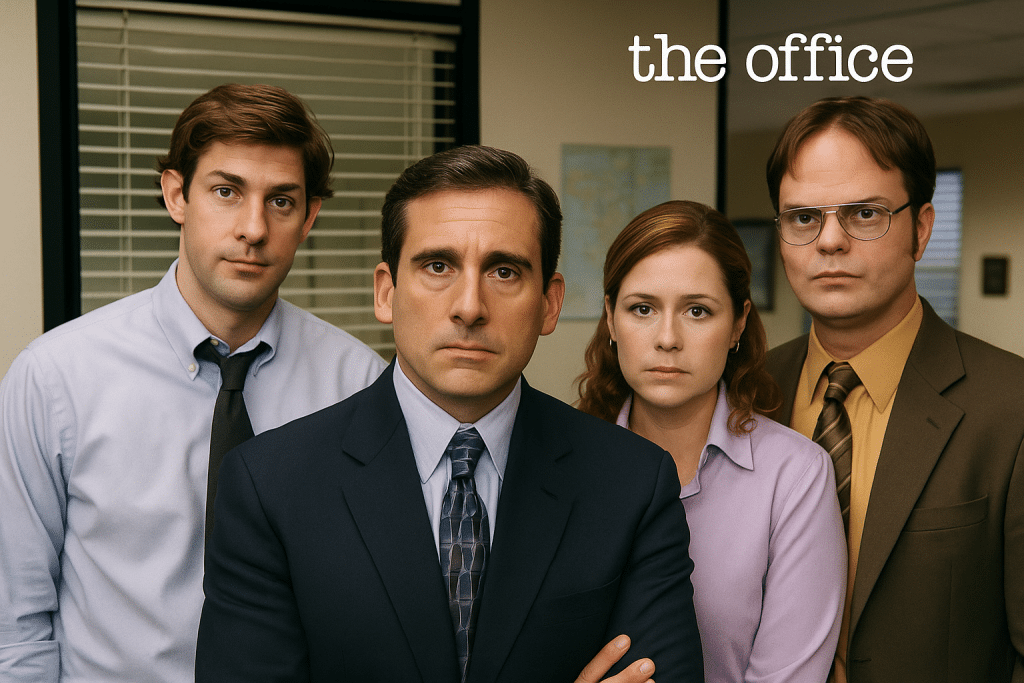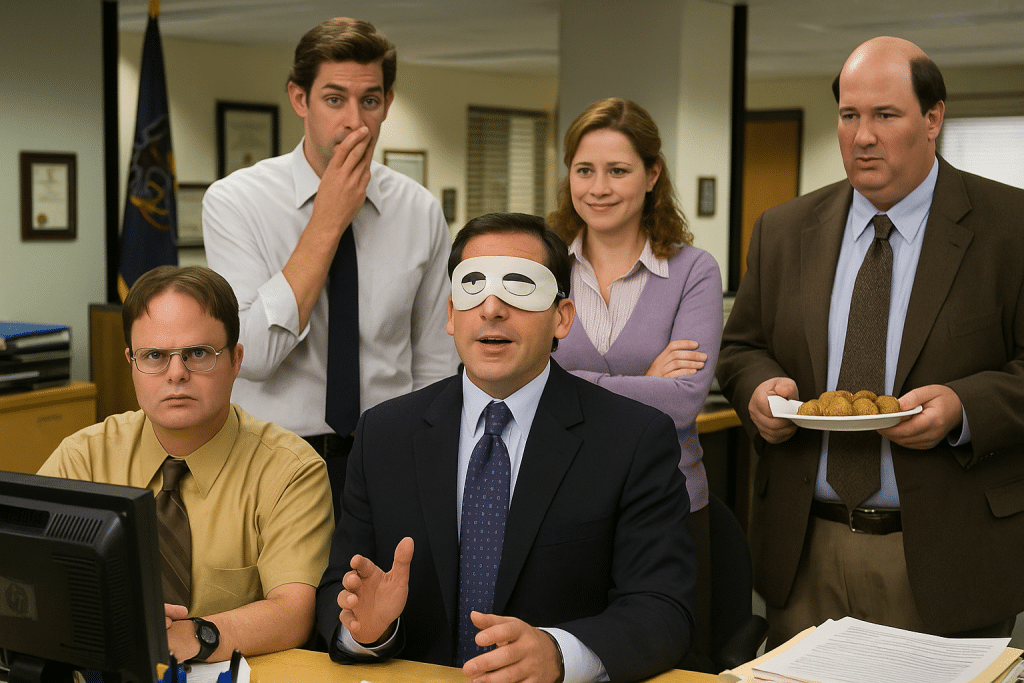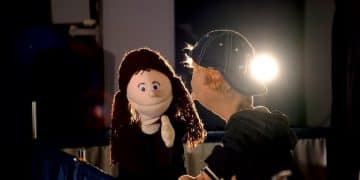The best episodes of The Office: A deep dive review

The Office is known for its mockumentary style and relatable humor. It blends workplace comedy with heartfelt character arcs, becoming a television classic.
The best episodes of The Office perfectly balance laughter and emotion.
Millions of viewers are familiar with Dunder Mifflin, but what makes an episode stand out?
Fans often debate which are the best episodes of The Office, with some moments becoming legendary.
Beyond its style and characters, certain episodes go further, offering insights into human nature and office absurdities.
The best episodes of The Office mix awkward comedy with genuine emotional depth.
This article explores the episodes that resonate most with fans, highlighting what makes them memorable. The best episodes of The Office combine humor, heart, and meaningful character growth.
The legacy of Dunder Mifflin: why The Office endures
The Office, as a cultural phenomenon, has maintained a remarkably strong presence in the collective consciousness long after its final episode aired.
Its enduring appeal can be attributed to a confluence of factors, ranging from its unique comedic style to its profound character development.
This section explores the fundamental reasons behind the show’s lasting legacy, highlighting the elements that consistently draw viewers back to Scranton.
Many agree that the best episodes of The Office combine these factors seamlessly, leaving lasting impressions.
At its core, The Office perfected the mockumentary format, making viewers feel like privy observers to the mundane yet hilariously chaotic lives of paper company employees.
This style allowed for intimate character moments, subtle comedic timing, and a unique blend of cringe humor with genuine warmth.
The relatability of the workplace setting, combined with exaggerated yet recognizable personalities, created a mirror reflecting the everyday absurdities many people encounter in their own professional lives.
It’s no wonder that lists of the best episodes of The Office are still widely circulated today.
The art of character-driven comedy
One of the show’s greatest strengths lies in its commitment to character development.
Over nine seasons, viewers watched characters like Michael Scott, Jim Halpert, Pam Beesly, and Dwight Schrute evolve, confront their flaws, and experience significant life changes.
These arcs often define the best episodes of The Office.
- Michael Scott’s evolution: From an oblivious, often inappropriate boss to a man capable of genuine affection and growth.
- Jim and Pam’s romance: A central, beloved storyline that anchored the show’s emotional core.
- Dwight Schrute’s quirks: His bizarre worldview and unwavering loyalty provided endless comedic material.
- Ensemble dynamics: The interplay between the diverse cast members, creating a rich tapestry of comedic and dramatic possibilities.
The show’s ability to balance laugh-out-loud moments with genuinely touching scenes is a testament to its writing and performances, ensuring that the best episodes of The Office remain unforgettable.
The pilot and early seasons: setting the stage
The pilot episode of The Office (US) had the monumental task of adapting a beloved British original while establishing its own distinct identity.
It succeeded by transplanting the core concept of a mundane workplace observed by a documentary crew, but infused it with a uniquely American sensibility and humor.
This initial offering, along with the subsequent early seasons, laid the essential groundwork for the show’s eventual success, introducing the characters and dynamics that would become iconic.
The pilot immediately introduced viewers to Michael Scott, the well-meaning but socially awkward regional manager, and the classic office archetypes: the sarcastic Jim, the sweet Pam, and the eccentric Dwight.
The humor initially leaned more heavily into cringe comedy, mirroring its British counterpart, but began to subtly evolve as the American version found its voice.
This period was crucial for character establishment, allowing audiences to become acquainted with the Dunder Mifflin Scranton branch and its quirky inhabitants.
Developing distinctive personalities
While the initial characterizations drew parallels to the UK version, the writers quickly began to flesh out each character, giving them unique backstories, motivations, and comedic beats.
This differentiation was key to making the US series stand on its own.
- Jim’s pranks: His playful antagonism towards Dwight became a hallmark of the show, defining their complex relationship.
- Pam’s artistic aspirations: Early glimpses of her desire for something more than a receptionist job added depth.
- Dwight’s ambition: His unwavering pursuit of power within the office, combined with his peculiar philosophies, made him endlessly entertaining.
- Supporting cast glimpses: Characters like Stanley, Phyllis, Oscar, and Kevin began to emerge from the background, offering their own comedic contributions.
The early seasons effectively established the show’s format, its comedic rhythm, and the emotional core centered around Jim and Pam’s burgeoning relationship.
They also set the precedent for the show’s ability to blend observational humor with genuine sentiment, laying a robust foundation for the many memorable episodes that would follow, including some of the best episodes of The Office.
Iconic moments: episodes that defined the series
Certain episodes of The Office transcend mere entertainment; they became cultural touchstones, defining moments that solidified the show’s place in television history.
These episodes often combined unparalleled comedic brilliance with significant character development or major plot advancements, leaving an indelible mark on viewers’ minds. Many of these are the best episodes of The Office.
Examining these iconic installments reveals the clever writing and impeccable timing that elevated The Office beyond a typical sitcom.
One such episode that consistently ranks high among fans is “Dinner Party” (Season 4). This episode is a masterclass in cringe comedy, trapping the main characters in a suffocatingly awkward evening at Michael and Jan’s condo.
The tension escalates with every passing minute, fueled by passive-aggressive jabs, bizarre home decor, and an underlying sense of impending disaster.
It’s a prime example of the show’s dark humor combined with its ability to highlight the dysfunctional nature of Michael’s personal life and is considered one of the best episodes of The Office.
The Dundies and beyond
The Dundies are an annual awards ceremony hosted by Michael Scott, celebrating the achievements (real or imagined) of his employees.
The very first “Dundies” episode in Season 2 is pivotal, showcasing Michael’s desperate need for approval while also providing a surprisingly heartwarming moment for Pam.
It sets the tone for Michael’s character and the employees’ complex relationship with him, making it one of the best episodes of The Office.
- “Threat Level Midnight” (Season 7): Michael Scott’s long-awaited action film finally premieres, a testament to his eccentric creativity and the employees’ reluctant participation.
- “Stress Relief” (Season 5): Features Dwight’s over-the-top fire drill, leading to pandemonium and Stanley’s heart attack, followed by the roasting of Michael Scott.
- “Casino Night” (Season 2): A landmark episode for Jim and Pam’s relationship, culminating in their first kiss and a significant emotional turning point.
- “Branch Closing” (Season 3): A tense episode where the Scranton branch faces potential closure, highlighting the characters’ anxieties and their bond.
These episodes weren’t just funny; they were significant. They advanced storylines, deepened character understanding, and provided memorable quotes and scenes that fans revisit time and again.
Their genius lies in their ability to deliver both uproarious laughter and poignant emotional beats within the span of a single half-hour, reinforcing why they are among the best episodes of The Office.

Character arcs: tracing development through key episodes
Beyond the comedic brilliance, a significant part of The Office’s enduring appeal lies in its nuanced and often touching character arcs.
Over the course of nine seasons, viewers witnessed profound development in many of the Dunder Mifflin employees, transforming them from caricatures into complex, relatable individuals.
This evolution wasn’t simply a matter of time; it was meticulously crafted through specific episodes that served as turning points, revealing their deepest fears, aspirations, and capacities for change.
Many of these turning points appear in what fans widely consider the best episodes of The Office. Michael Scott’s journey is arguably the most prominent example.
Initially presented as a cringe-inducing, inept boss, his character slowly unveiled layers of insecurity, loneliness, and a genuine, albeit misguided, desire to be loved.
Episodes like “Goodbye, Michael” (Season 7) powerfully encapsulate his growth, making it one of the best episodes of The Office in terms of emotional impact.
The evolution of relationships
The romantic and platonic relationships within the office also underwent considerable development, providing much of the show’s emotional weight.
Jim and Pam’s relationship, in particular, was a narrative backbone, allowing audiences to invest deeply in their story.
- Jim and Pam’s engagement (“Weight Loss,” Season 5): A simple yet profoundly romantic proposal at a gas station, a testament to their understated connection, considered one of the best episodes of The Office.
- Dwight and Angela’s complex courtship: From secret lovers to a tumultuous separation and eventual reunion, their bizarre romance was surprisingly moving, appearing in several of the best episodes of The Office.
- Andy Bernard’s search for identity: Initially an antagonist, he eventually sought happiness outside the corporate world, though not always gracefully.
- Oscar and Kevin’s friendship: A subtle but endearing bond that highlighted their contrasting personalities.
These developments weren’t always smooth or linear, mirroring real-life complexities, which made them all the more compelling and helped define the best episodes of The Office.
The show excelled at portraying how people grow and change, both individually and in relation to those around them, making the characters feel like genuine friends viewers were watching navigate life’s challenges.
Behind the scenes: writing, directing, and improv
The seamless blend of humor, heart, and relatable workplace scenarios in The Office was no accident.
It was the result of a meticulously crafted production process that involved brilliant writing, thoughtful directing, and a significant reliance on the cast’s improvisational talents.
Many of these episodes achieved iconic status and are frequently listed among the best episodes of The Office.
The writing staff, led initially by Greg Daniels, prioritized character consistency and long-term arcs while still delivering sharp, episodic humor.
They excelled at creating awkward situations and allowing conversations to unfold naturally, often with multiple layers of subtext.
The role of improv and direction
Many of the show’s most memorable moments, particularly those featuring Michael Scott’s unfiltered reactions or Dwight’s bizarre declarations, were products of improvisation during filming.
- Steve Carell’s genius: His ability to improvise and stay in character, especially during Michael’s most uncomfortable moments, was integral to the show’s comedy, enhancing many of the best episodes of The Office.
- Naturalistic camera work: The mockumentary style meant camera operators often reacted to the action, creating a sense of live observation that enhanced realism.
- Subtle reactions: Many jokes landed through characters’ glances or subtle gestures, a credit to both writing and directing.
- Collaborative environment: The cast and crew often contributed ideas, leading to a dynamic and creative production process.
The directing consistently supported the mockumentary format, using techniques like camera zooms, direct-to-camera glances, and confessional interviews to break the fourth wall effectively.
This combination of strong foundational scripts, improvisational freedom, and a keen understanding of the show’s unique style allowed The Office to produce episodes that felt both authentic and universally hilarious, cementing its place as a comedy masterpiece.
The enduring appeal: what makes episodes timeless?
Even years after its conclusion, the best episodes of The Office retain a timeless quality, continuing to captivate new audiences and delight veteran fans alike.
This enduring appeal is built upon more than just nostalgia; it stems from a combination of universal themes, masterful comedic execution, and a surprisingly deep emotional core.
Understanding what contributes to this longevity sheds light on the show’s sustained cultural relevance.
At its heart, The Office tapped into fundamental human experiences that cut across generations.
The mundane realities of office life, the quirks of colleagues, and the universal desire for connection and recognition are explored in episodes frequently recognized as the best episodes of The Office, ensuring the show’s humor and heart remain relatable.
Universal themes and relatability
The show’s ability to balance its signature cringe humor with moments of genuine warmth and sentimentality is key to its timelessness.
Viewers were not only laughing at the characters but also empathizing with their struggles and celebrating their triumphs.
This emotional investment creates a bond that transcends topical humor and contributes to why many lists highlight the best episodes of The Office.
- Workplace dynamics: The universal struggles of corporate hierarchy, office politics, and finding meaning in employment.
- Human relationships: The intricate tapestry of friendships, rivalries, and romances that evolve in a shared environment.
- The search for happiness: Each character, in their own way, is seeking contentment, whether in love, career success, or simply through daily interactions.
- Humor in the mundane: Transforming everyday office scenarios into comedic gold, making the show perpetually relatable.
Furthermore, the subtle nature of many of its jokes, relying on facial expressions, awkward silences, and character reactions, prevents the humor from feeling dated.
Unlike shows that rely heavily on pop culture references, The Office’s comedy is largely character-driven and observational, ensuring its appeal remains fresh.
This combination of universal themes, character depth, and intelligent humor ensures that its most memorable installments, regarded as the best episodes of The Office, will continue to be cherished for years to come.
| Key Point | Brief Description |
|---|---|
| 🎭 Mockumentary Format | Unique filming style that makes viewers feel like part of the office. |
| 💖 Character Development | Deep and relatable evolution of beloved characters over time. |
| 😂 Iconic Episodes | Landmark installments with memorable comedy and plot points. |
| ✍️ Writing and Improv | The show’s blend of sharp scripts and actor improvisation. |
Frequently Asked Questions (FAQ) about The Office’s Best Episodes
While subjective, “Dinner Party,” “Stress Relief,” and “Goodbye, Michael” are consistently cited by critics and fans as among the absolute best. “Dinner Party” for its cringe comedy, “Stress Relief” for its memorable opening and roast, and “Goodbye, Michael” for its emotional depth and send-off for Steve Carell’s character.
“Dinner Party” is lauded for its masterful execution of cringe humor, trapping characters in a hilariously awkward home environment. The episode brilliantly exposes Michael and Jan’s dysfunctional relationship, providing a contained yet highly impactful comedic and dramatic experience that relies heavily on character interaction and subtle nuances.
Jim and Pam’s wedding takes place in the iconic two-part episode “Niagara” from Season 6. This episode is a fan favorite, known for its mix of heartfelt moments, especially their private ceremony on the Maid of the Mist, and classic Office humor involving the quirky Dunder Mifflin staff.
“Stress Relief” is renowned for its unforgettable opening sequence featuring Dwight’s wild fire drill, which causes chaos and a heart attack. The episode also includes Michael’s Roast, where the employees humorously criticize their boss, offering both comedic relief and an unexpected moment of catharsis for Michael and the team.
Yes, “Money” (Season 4) is a prominent episode that features portions taking place at Schrute Farms, revealing more about Dwight’s unique background and the beet farm’s transformation into a bed and breakfast. Subsequent episodes also occasionally revisit the farm, offering glimpses into Dwight’s unconventional life outside Dunder Mifflin.





